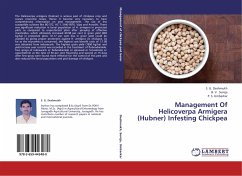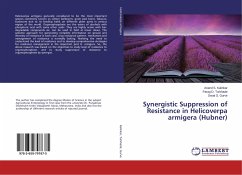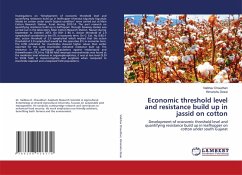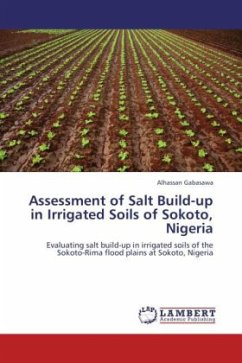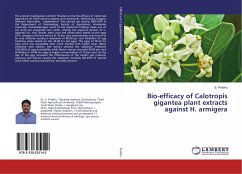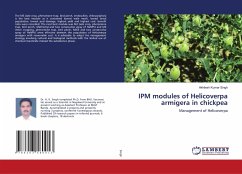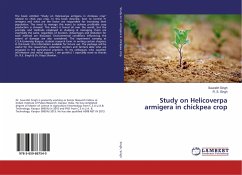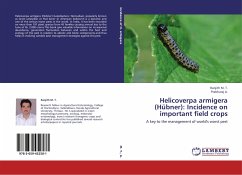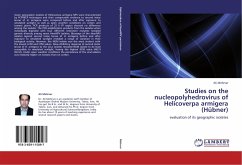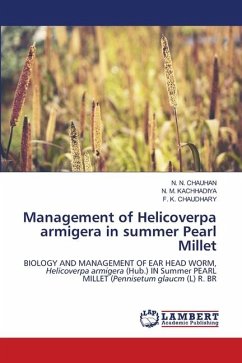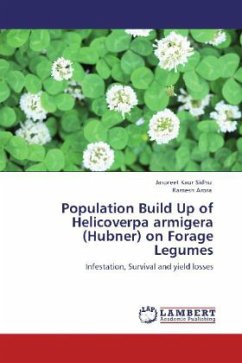
Population Build Up of Helicoverpa armigera (Hubner) on Forage Legumes
Infestation, Survival and yield losses
Versandkostenfrei!
Versandfertig in 6-10 Tagen
32,99 €
inkl. MwSt.

PAYBACK Punkte
16 °P sammeln!
Helicoverpa armigera (Hubner) (Noctuidae:Lepidoptera) is a major threat to intensive agriculture (Sigsgaard et al 2002). Its wide dissemination and pest status has been attributed to its polyphagy, and its ability to undergo both facultative diapause and seasonal migration (Fitt, 1989). Worldwide the annual control costs and production losses due to H. armigera amount to US $ 5 billion (Anonymous 2005b) while in India damage worth US $ 1 billion has been estimated (Subramanian and Mohankumar, 2006). This species is a key pest of Berseem seed crop in Punjab since 1940s. (Dhaliwal and Sidhu 1990...
Helicoverpa armigera (Hubner) (Noctuidae:Lepidoptera) is a major threat to intensive agriculture (Sigsgaard et al 2002). Its wide dissemination and pest status has been attributed to its polyphagy, and its ability to undergo both facultative diapause and seasonal migration (Fitt, 1989). Worldwide the annual control costs and production losses due to H. armigera amount to US $ 5 billion (Anonymous 2005b) while in India damage worth US $ 1 billion has been estimated (Subramanian and Mohankumar, 2006). This species is a key pest of Berseem seed crop in Punjab since 1940s. (Dhaliwal and Sidhu 1990). Severe infestation by H. armigera reduced seed yield by 70-80 per cent in the Amritsar district during 1969 (Singh et al 1973). Information on the population build up and development of H. armigera on these fodder legumes is scanty in literature and, thus, the present studies on H. armigera have been planned to study the population build up, comparative development and survival and food consumption of H. armigera on selected genotypes of Berseem, Lucerne and Shaftal.



